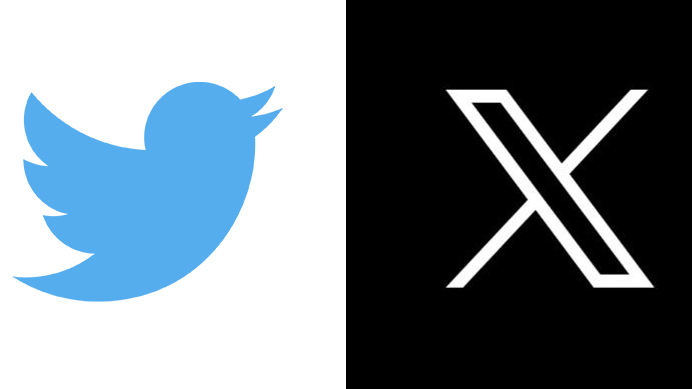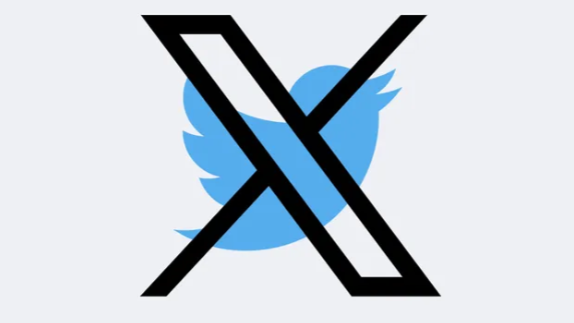By Nick Brown
If you’re one of many business owners and entrepreneurs out there who thinks that ’brand’ equals the company’s name and logo, we strongly encourage you to think again. In today’s business world, it’s not uncommon that people make mistakes such as this one. And while it’s true that brand is tightly connected to these instances (the company’s name and logo), the story doesn’t end there.
If you aim at successfully running your business, you need to realize just how important your brand is. We’re not very fond of strict definitions of terms, but if we had to sum up what ’brand’ actually encompasses, we’d have to roughly say that it involves (and revolves around) all the experiences that people have with your firm. You’ll notice that the keyword here is the term ’experience’. This means that you need to worry about how your company is being perceived by others. Your customers and prospects should ideally have a pretty good all-around experience with your firm, which usually means that your brand is doing alright.
But often, this is not the case. For various different reasons, it happens that companies stop being the customer’s favorite. Sometimes it’s the competition and in other cases, it’s bad marketing decisions that led to this situation. Whatever it may be the case, if you realize that your company is struggling on its way to the top, or things have suddenly started to go downhill for you, maybe you should consider rebranding. That’s why, in this article, we’re going to talk about these things more thoroughly. We’ll guide you through the process of recognizing if your company needs a rebrand, and if it does, how to do it the right way.
Distinguish Yourself From the Rest of the Peers and Competitors
One of the most crucial things you must do is to differentiate yourself from the competition. You can’t expect to retain old customers and gain new ones if people can’t really tell what your brand is exactly about and why is it so special.
In order to do this, a prudent thing to do would be to rebrand. This is especially important if you realize you have some generic logo or a name that doesn’t resonate in people’s heads. Customers like to see when businesses care about these things because it also shows that they care about them. So, if you’re using stock images in your marketing materials, it’s best advised to stop this practice. People recognize these generic images and this tells them that you’re not as involved as you should be in making sure they get the best experience when dealing with your product.
If You Suspect Your Brand Is Outdated – Rebrand ASAP

There’s a pretty simple rule in marketing: if you even suspect that your brand is outdated, you should rebrand immediately. Sometimes this is also advisable in situations when you’re not really suspecting anything, but if and when in doubt, make sure to breathe a new life into your existing brand.
Some of the clear signs that you possibly should consider rebranding is an outmoded font or flash-based website, for example. These things belong to the past. You might think that this is not as important, but since so many things happen online, it’s paramount that your company has a fresh, modern-looking website that’s going to visually match today’s marketing trends and criteria. You need to realize that your company’s website, logo, name, and the whole visual identity can be either a deal-maker or a deal-breaker.
Any Sign of Poor Reputation Requires Rebranding
On the other hand, if you start seeing that your business is slowly going down the drain and it’s getting a poor reputation, it’s essential to do something pronto. You can’t expect to live from old glory days, and you need to learn how to adjust accordingly. Don’t sell your business if you don’t have to since there are other ways you can try to save it.
Rebranding is clearly one of those things that, if done properly, can make your business rise again to its previous blissful days. Overcoming negative reputation is never easy, but if there’s a proper way to try, it’s making sure the customers start seeing you in a completely new light.
It’s Essential to Rebrand When Your Company Evolves
But it’s not crucial to rebrand just in case your company starts to struggle. On the contrary – even if it starts to grow rapidly, it’s of utmost importance to think about different strategies and ways to rebrand. Many people make the mistake of leaving everything as it is in a situation when the business starts making progress and becomes a success. But this is one of the errors you definitely need to avoid.
And in those situations when you’re trying to expand your business to other markets, it’s also of prime importance to make sure there aren’t any other companies or businesses with similar brand names, logos, and that their visual identity doesn’t match yours in any way. You clearly want to avoid people associating your brand with someone else’s, or mistaking you for someone else. If this happens, you could be looking at potential problems that revolve around patent disputes, or other legal issues. We’d strongly advise you to make sure that this doesn’t happen and to spare yourself from going to court over these matters.
A Huge Part of Successful Rebranding Is Having Clear Goals

This is something that applies to all companies, no matter if they’re in the process of rebranding or not: you need to have clear goals in mind. If you want to be successful, you have to know what is it exactly that you’re trying to accomplish. The way you approach your company’s mission and values is going to set the tone for the entire venture.
That’s why it’s so important to ask yourself and try to honestly answer the questions that revolve around the reasons why your company exists, what values does it promote, and what is it that you can offer that’s rather unique. Having clear answers to these questions will most definitely help you to rebrand successfully.
Consistency is Key – Make Sure to Rebrand Accordingly
Speaking of successful rebranding, you need to make sure to go through this process accordingly. This means that you have to pay attention to the way your brand has been perceived in the past. If you’re not rebranding because of the poor reputation, there’s no need to take the entirely different route. On the contrary, it’s better to stay on track and develop a strategy that’s going to work effectively with your existing brand.
Even if you have the luxury to start from scratch here, it’s better to be consistent. You don’t want people to have troubles recognizing your product or services – you only want to give them something that’s going to show that you care (for them, as well as your position in the marketplace). You want to attract customers with higher retention rates, but you also don’t want to lose any old customers in the process.
Pay Attention to Your Competitors

We’ve already indicated how important it is to set yourself apart from the competitors. One of the ways to properly rebrand has to involve doing your due diligence and researching what the competition does. Ideally, you want to create the brand that’s so powerful that everyone else looks at and mimics what you’re doing.
But the truth is, even if you’re a trailblazer and a trendsetter in this regard and other companies try to recreate your strategies and methods, you still have to watch closely what everyone else is doing. It’s ok to play that bushwhacker role in front of the consumers, but when the doors are closed, you simply have to know what your competition does. If you don’t do this, you might find yourself in the position of having to rebrand due to some other reasons, like the poor reputation that we’ve already talked about, for instance.
Be Open to Different Ideas From Your Team
Being a company leader or manager isn’t the easiest task. Often time you have to make all the big decisions concerning your company. But in some cases, this creates a certain problem: people who are in high positions within the company tend to neglect other people’s opinions. If you want to (continue to) have success, it’s strongly advised to have people who your trust on your team.
Other voices need to be heard and you can all profit from this. Not only can you hear some good new ideas about the proper way to rebrand, but you’ll also show everyone that their opinion matters. This is extremely important if you’re looking to create good office vibes and an environment that values good ideas.
Don’t Underestimate the Complexity of the Task
If you’re looking to rebrand the right way, don’t underestimate the complexity of the task. It may sound like it’s not that big of a deal – you just take care of your visual identity – but remember what we’ve said at the very beginning: your brand is much more than this. It’s not enough to have a new logo, name, or a company website that follows latest web-design trends. You have to pay attention to the whole user experience.
Many company owners don’t realize just how lengthy and serious this process is. You need to plan everything carefully and manage the entire endeavor from start to finish. If you neglect certain parts of this process, the whole thing can be deemed a failure. That’s why a well thought-out project plan is crucial here. As we said, don’t try to micromanage every step, but trust your team to make sound decisions.
Ensure to Timely Launch Your Rebrand
Another important thing you have to make sure is to launch your rebrand on time. This is also connected to closely watching the market. You need to see what your competitors do and, like it or not, follow their pace from time to time.
For example, if you realize that your competitors are preparing to do something big, you need to assess the situation properly. If you launch your rebrand before they make their big announcement, you can potentially find yourself in a bad situation, especially if their surprise outshines yours. Customers could completely forget the fact that you’ve rebranded, or think that it’s not a particularly big deal (compared to your competition).
On the other hand, if you wait too long to launch your rebrand, you’re putting the entire operation in jeopardy. It wouldn’t be the first time that a company has put valuable resources into rebranding without ever actually launching it. You need to do whatever it is in your power to avoid this scenario. On top of this, you also need to avoid any confusion – the potential customers and consumers should know exactly why you rebranded. There should be a clear logic behind the idea and they need to see the improvements right away.
The Bottom Line
Every company needs a rebrand from time to time – this is something that’s inevitable because of the simple fact that things change rapidly. You don’t want to have an outdated brand: this reflects poorly on the entire company. And once you gain that reputation, it can be pretty hard to make it go away. And one of the ways to make this negative reputation go away is exactly through rebranding.
In this article, we’ve talked about how to know when your business needs a rebrand, and how to do it properly. The most important thing to remember is that you need to take care of your customers at all times – that way you’re actually giving enough space to your company to potentially become a huge success. Constantly growing, evolving, further progressing, and expanding your business to other markets should be one of your top priorities, but just make sure you’re protected from patent infringement. You don’t want any legal issues to stop you from reaching your full business potential.
By Nick Brown
Nick is a blogger and a marketing expert currently engaged on projects for Media Gurus, an Australian business, and marketing resource. He is an aspiring street artist and does Audio/Video editing as a hobby.”
















